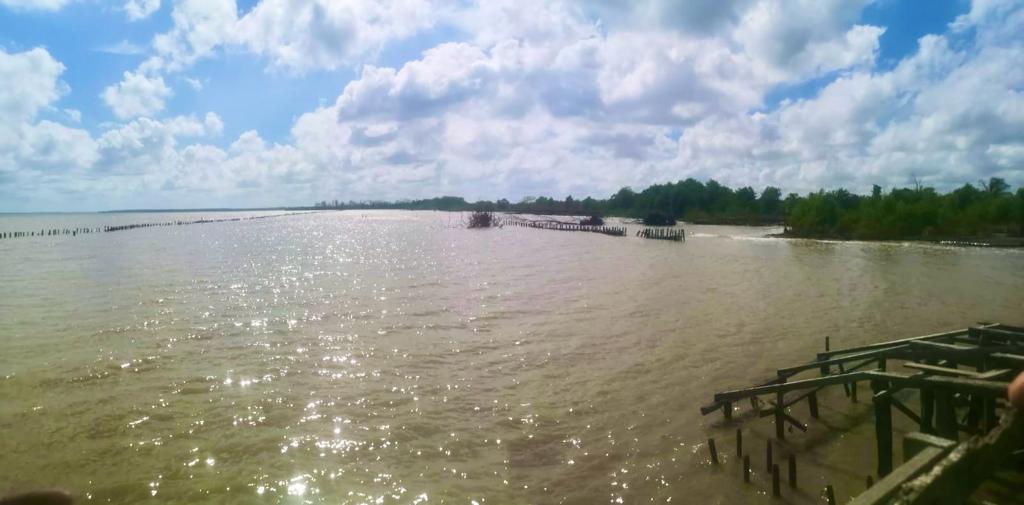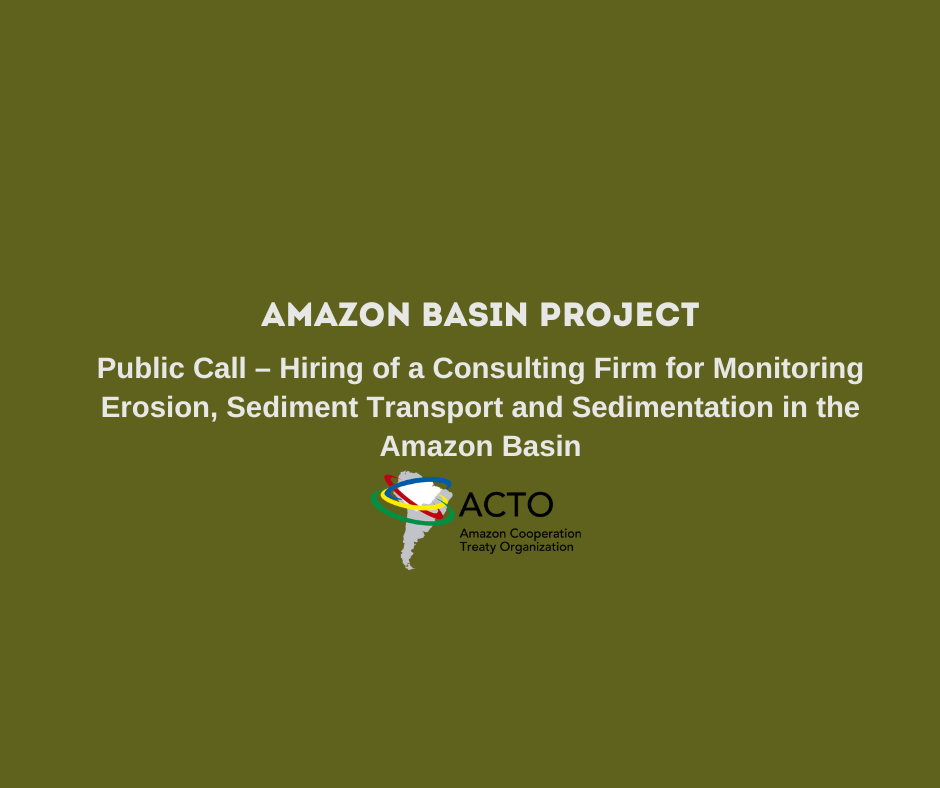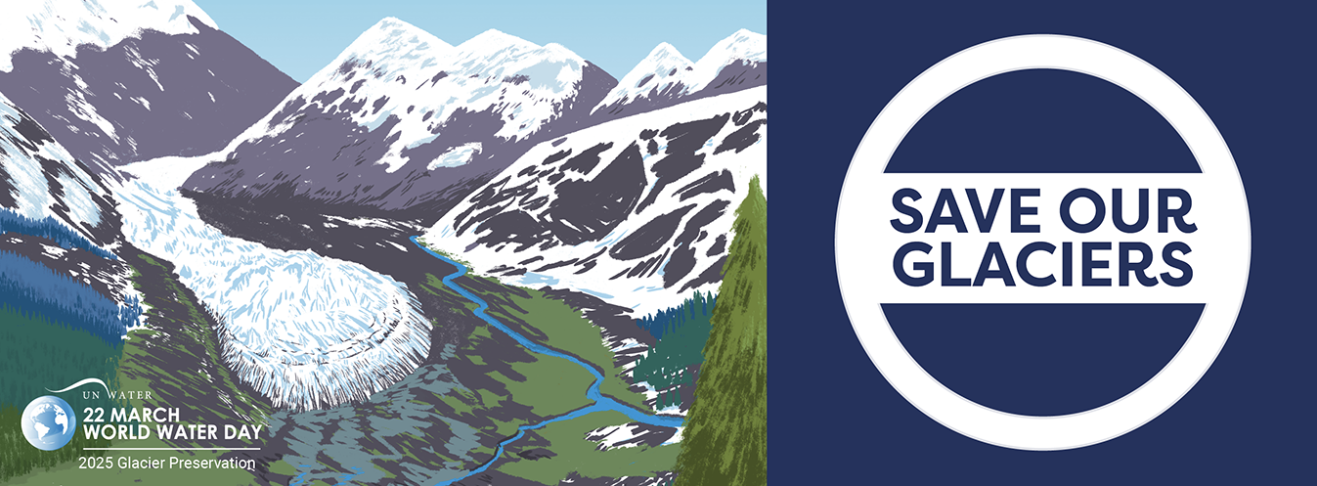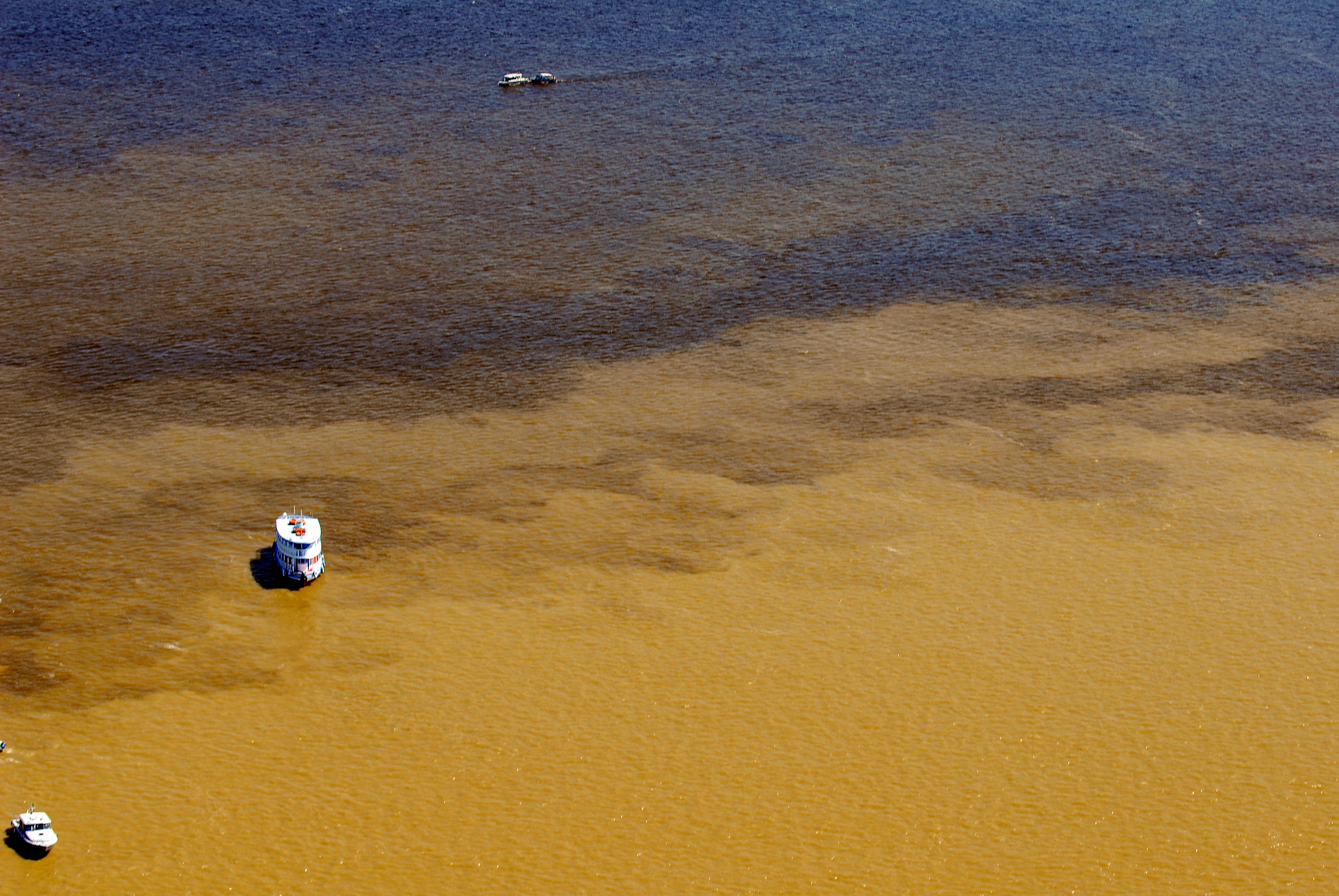North of the capital Paramaribo, a portion of the 100,000 hectares of mangroves that cover the coast of Suriname suffer from constant flooding caused by a process of accelerated erosion, negatively affecting the provision of environmental, economic and social goods and services provided by these coastal ecosystems. In this coastal area, the Surinamese government and the Amazon Cooperation Treaty Organization (ACTO) began a project in October that will use a collective incentive funding mechanism to restore, protect and conserve the mangroves, with the participation of a group of women from local communities whose livelihoods are predominantly linked to these coastal ecosystems.
The degradation of mangroves in Suriname extends to other stretches of coastline and has multifactorial causes ranging from rising sea levels to the expansion of coastal cities, where 90% of the country’s population lives. Mangrove forests are critical not only to the communities that depend on them for their livelihoods, but to the well-being and development of the entire Surinamese population, as they contribute to the protection of the coastal zone against natural disasters, the mitigation and adaptation to climate change, since mangroves capture more carbon per hectare than any other type of forest, and the boosting of important sectors of the economy, such as agriculture and tourism.
Ensuring that the ecosystem services of the mangrove forests north of the Surinamese capital are maintained and sustained is the aim of the intervention coordinated by the Ministry of Spacial Planning and Environment and carried out as part of the Amazon Basin Project – Implementation of the Strategic Action Program (SAP), execued by ACTO, in partnership with UNEP/GEF. To this end, the project will combine the recovery of degraded areas with income generation, directly benefiting 2.500 people. Its implementation is being carried out in synergy with the intervention which plans to increase the resilience of the country’s ecosystems and coastal communities by building natural infrastructure to rehabilitate the degraded mangrove swamp.
Blue Forests for a Blue Economy
The process of restoring mangroves with the participation of women from coastal communities will be based on the “Blue Forest for a Blue Economy” approach, to be applied by the Institute of Green Economy in Suriname, the project’s operational partner. This approach was developed with GEF support in Gazy Bay, Kenya, and successfully applied in Ecuador to ensure the long-term conservation of mangroves, while at the same time contributing to increased human well-being and development.
Mangrove forests, called blue forests because they are marine ecosystems, are important economic drivers, provided they are managed sustainably. Protecting them means investing in a “blue” economy, adopting nature-based solutions to restore natural capital and create social, environmental and economic resilience.
Technical visit to the project area
In October, Sieuwnath Naipal, Professor of Hydrology and Water and Climate Change at the Anton University of Kom, presented the area chosen for the implementation of the project to the ACTO/ Amazon Basin Project technical team, composed on this occasion of Fernando Cisneiros, Water Resources Specialist, Luiz Amore, Institutional Specialist, and Sara Gomez, Gender Consultant.
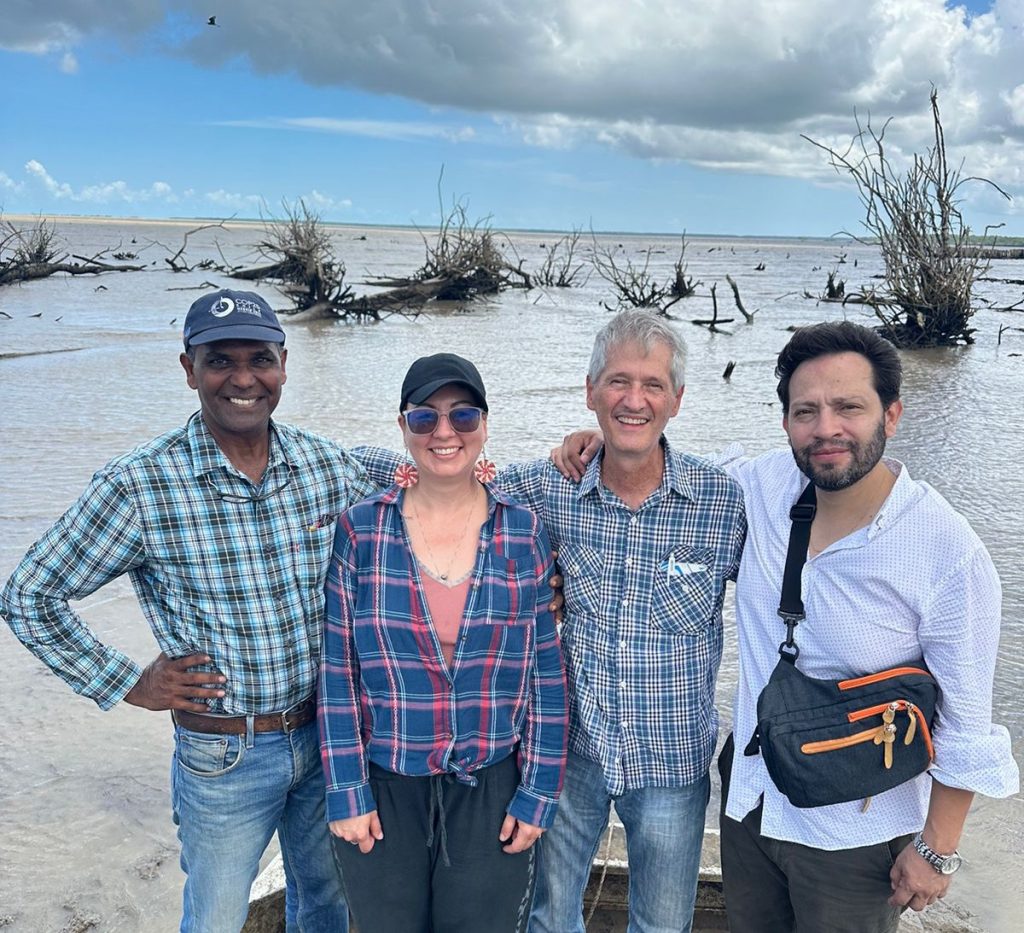
Professor Naipal and the Amazon Basin Project team – Sara Gómez, Luiz Amore and Fernando Cisneiros
Professor Naipal explained that in the area in question the fertile sediments carried from the Amazon River basin, responsible for feeding the mangroves that cover the Surinamese coast, can no longer be retained. The displacement of sediment caused by ocean waters over the last decade is, on this stretch of coast, 40 to 50 meters to the south, according to a study carried out by the Anton de Kom University.
For this reason, the strategy developed for the rehabilitation of this mangrove area requires the complementarity of two interventions, both carried out within the scope of the Amazon Basin Project: the first dedicated to the construction of sediment retention units and the second focusing on the design of incentives-based financing mechanism to restore and conserve Suriname’s mangroves forests and manage their interaction with the mud flats/banks.

Sediment retention units in a mangrove rehabilitation area in Paramaribo
The construction of sediment retention units is a nature-based solution and therefore responds to the principles of the blue economy, as does the financial incentive mechanism aimed at the women of the local communities, through which they will receive revenue for the seedlings they are growing in their backyards.
As a result of the two interventions, the construction of the natural infrastructure is expected to promote sedimentation, an essential process for the subsequent stage of mud bank creation, in which the planting of mangrove species will take place, completing the rehabilitation cycle.
